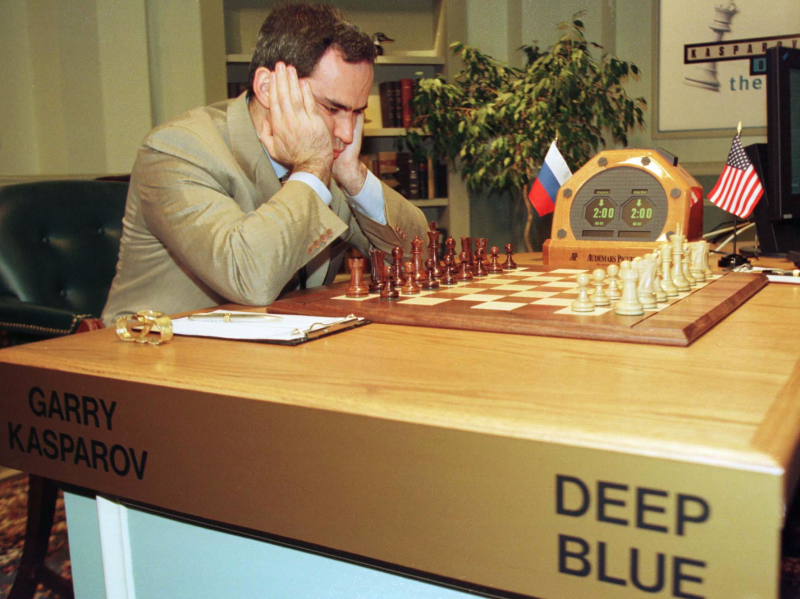Top 10 Mysteries That Had Unbelievable Solutions
Human beings enjoy a good mystery. Given a puzzle, it's very hard to not want to try to solve it; that's just how our minds operate. Others are just absolutely ... read more...unexpected and unreal, despite the fact that some secrets are relatively simple and others are almost impossible. In some cases, the answer is stranger than the enigma itself. Here are some Mysteries That Had Unbelievable Solutions.
-
Musicologists and historians have been perplexed by Beethoven's music's tempo for a long time. Many people disregard the confusing tempo markers on his sheet music because they don't actually make any sense. The recorded pace on nearly half of his 135 original music sheets is so peculiar that most listeners merely think it's wrong.
How was it possible for one of the greatest musicians in history to be so skilled at creating and writing music while entirely misjudging his own tempo? After several years of research, it appears that the metronome, not Beethoven, was to blame for the tempo error. In other words, he most likely simply had a broken metronome or was misinterpreting it.
Beethoven's lack of a metronome when he first began producing music may have contributed to some of this issue. But after their creation, he was so taken with the concept that he went back and added tempo markings to several of his older symphonies, which seem to make no sense whatsoever and suggest the music should be played at an absurdly rapid speed. Beethoven's tempo markings would be worthless if the metronome was off or if he didn't know how to interpret the relatively new innovation, which appears to be the case.

https://www.sherwoodphoenix.co.uk/ 
http://dianagrigore.deviantart.com/ -
If you're really like honey, you're probably aware that there are numerous varieties available for purchase. from buckwheat honey to manuka honey and other types of honey. They have distinct distinctions in color and flavor as a result of the honey bees collecting nectar from various kinds of plants. The color variations range from light yellow to darker yellow to brown, but they are typically not very striking.
It was definitely a wonder when bees in France began making blue honey because historically bees weren't known to do so. In 2014, the honey began to appear in Alsace, and there was some concern that perhaps pesticides or other chemicals were involved.
Researchers and beekeepers had to look into the area, and they eventually found the source around 2.5 miles away from the apiaries. The bees were robbing a plant that processed garbage from a Mars facility, in this case the colorful candy shells of old M&Ms, and creating the colorful but completely unusable honey as a result.

https://twomenandalittlefarm.blogspot.com/ 
http://www.ourstate.com -
Aircraft emergencies can be particularly terrifying. When something goes wrong and endangers people's safety, you never want to be on a plane. Therefore, it stands to reason that when a Boeing 747 was traveling from Sydney, Australia to Kuala Lumpur, Malaysia in 2015, unexplained smoke began to accumulate in the cargo hold, forcing the pilots to make an emergency landing.
Smoke detectors sounded, and the jet landed in Bali. The plane was carrying a staggering 2,186 sheep when the alarm went off in the cargo compartment. The fire was not there when the authorities arrived to do their investigation, and it turned out that smoke had not set off the alarm after all. Instead, the airline learned that, when over 2,000 sheep are enclosed in a metal tube with minimal ventilation, the volatile methane from their farts can cause a smoke alarm to go off, which is exactly what happened. Effective air clearing and getting the jet ready to take off again took a few hours.

https://airplanes.itsabouttravelling.com/ 
http://airplanes.itsabouttravelling.com/ -
If you get to explore a recently formed volcanic island, you're actually exploring new territory, which is one of the wonderful things about them. Nowadays, it's nearly hard to accomplish that. So you can imagine there was considerable excitement when scientists arrived at a volcanic island in 1969 that had only been around for a few years at that point. And when a tomato plant was seen growing there, the situation became more confusing.
A small group of researchers discovered a plant that shouldn't have been growing there and contacted gst Bjarnason, whose responsibility it was to keep an eye on the island southeast of Iceland's plant life. The two-year-old island couldn't have native tomatoes, so even if it appeared to be a tomato when he arrived, it couldn't have been.
After shifting some rocks during his further investigation, Bjarnason found the tomato growing out of a soft object, which he subsequently poked before recognizing what had happened. At some time, a scientist on the island had eaten tomatoes and then used the restroom right there. Bjarnason had just prodded a dung pile when a seed managed to pass through their digestive system unharmed. He packed everything into bags and departed.
https://yesterdaysisland.com/ 
https://www.abelandcole.co.uk/ -
On August 4, 1972, dozens of mines that were submerged in the water near the North Vietnamese port of Hai Phong detonated in a matter of seconds. Thousands of mines laid by American troops in the waters off the coast of North Vietnam were waiting for passing ships. However, no ships had launched them in this instance. The sheer number of mines that went off at once suggested it must have been something significant, but the pilots in the area observed nothing at all that could have set them off. For years, the cause was completely unknown.
2018 has passed, and researchers have a plausible reason. In order to connect to boat hulls and detonate, those sea mines used magnets as part of their triggering mechanism. The magnetic triggers may have been hampered by an appropriately intense solar storm, which would have set them all off at once. According to research, the sun's activity was higher in the days preceding the explosions, and other nations experienced magnetic interference as well. Before concealing their research, the military had even proposed a solar storm as the probable reason.

http://cimsec.org 
https://greenpointers.com/ -
Though it doesn't happen frequently, it is possible for a woman to fail a pregnancy test. And based on that, you might infer that the woman was pretending to be a mother. In 2002, Lydia Fairchild had to put up with that. She had sought for social assistance, which required documentation proving each family member's relationship to the other. But her DNA test revealed that her children were not hers. She was falsely charged, and she nearly lost her kids. But she was aware that they belonged to her.
50% of a child's DNA comes from their mother and 50% from their father. In a DNA test, we use PCR to extract and amplify DNA from the supplied DNA samples (polymerase chain reaction). We can map the mother and child's DNA profiles thanks to PCR. Each test subject's individual profile consists of a total of 21 genetic markers. A genetic marker is a gene or DNA sequence that may be used to identify people and has a known location on a chromosome.
Fairchild turned out to be a genetic chimera. Two fertilized eggs by her mother most likely resulted in non-identical twins, but one of the eggs was digested, leaving Fairchild with a second set of genetic material. She was successful in establishing her case in court and was granted custody of her kids.

http://yesofcorsa.com/ 
https://www.joehaydenrealtor.com -
The world is captivated by people who live incredibly long lives, thus the discovery that Pierre Joubert was 113 years old was quite the accomplishment. This was in 1814, by the way! His age was accurately recorded by census takers for the Canadian government, and it was thought to be the truth. How, then, did a man live to be 113 years old in 1814? He didn't, in fact.
It turned out that Pierre's father had the same name. When determining Junior's age, the paperwork got jumbled up, turning him and his father into one person. His father, who was 65 years old when he passed away, was born in 1701. It turned out that Pierre's father had the same name. When determining Junior's age, the paperwork got jumbled up, turning him and his father into one person. His father, who was 65 years old when he passed away, was born in 1701. The younger Joubert would have been 82 years old because he was born in 1732. which is undoubtedly outdated. But it most definitely isn't 113.

https://peterspierrejoubert.blogspot.com/ 
https://out-of-context-joubert.tumblr.com -
People have certain expectations of a chess champion. Or at least one thing, which is the capacity for chess victory. When IBM developed Deep Blue, a computer that could play chess at an expert level, there was some serious skepticism as to whether a machine could defeat Garry Kasparov, who had long been regarded as the best of the best in the game. Kasparov asserted that he had no chance of losing. Though he did.
Midway through the game, at the 44th move, Deep Blue made a move that many onlookers found both puzzling and fascinating. A rook was moved by a computer. It also had no justification. Really, the action wasn't either defensive or offensive. Most people thought it was useless. Some strategists viewed it as the first shot in a long-term plan, sacrificing a component that wasn't necessary in order to play defense while going on attack. And most people concur that it frightened Kasparov. He was unable to determine the computer's objectives. Even the idea that a human master had stepped in was floated.
Despite winning that first round, Kasparov would go on to lose the following two, draw the next three, and lose the sixth, giving the computer the victory overall. Years later, one of Big Blue's creators claimed that the move that perplexed Kasparov was only a bug. The computer was unable to select the best move due to a problem, so it chose a default move—a random one—because it was unsure of what to do. However, it sufficiently confused Kasparov and led him to believe that the machine was far smarter than it actually was that he was never able to recover.
https://www.businessinsider.com 
https://rarehistoricalphotos.com -
There aren't many things more unpleasant than losing power, but the Indian village of Ganeshpur had to put up with it frequently, since the power would go out for two or three hours at night. People started to become suspicious because the nearby towns were fine and there was never inclement weather or anything else you may ordinarily associate with town-wide power outages. What might result in brief, frequent power outages?
Local electrician was being suspected by the locals as they grew suspicious. The following time the power went out, they tracked the man to a nearby school, where he was covertly having sex with his girlfriend. He had been routinely interrupting the power, so they could meet secretly. The locals were not amused and reportedly thrashed the man before shaving his head and forcing him to wed his girlfriend.
An Indian guy was arrested after it was claimed that he had turned off the power to his entire hamlet so he could meet his girlfriend in the dark. Due to the occurrence, the electrician was forced into marriage with the woman after being caught red-handed by the townspeople.

https://www.walmart.com 
https://jooinn.com/ -
The Irish police had their hands full in the early 2000s dealing with Prawo Jazdy, a notorious serial offender. Of course they weren't violent, but they did show a complete disregard for the laws of the road. Jazdy had received multiple tickets for speeding and parking infractions across the nation. He was able to get away with it because each time he was apprehended, he gave the police a new address and identity.
By the time Jazdy had accrued more than 50 traffic violations, Irish police had begun to make a concerted attempt to find him and put a stop to his reign of terror on the roadways. The Irish police eventually figured out how Jazdy had managed to elude them for so long while continuing committing traffic offenses. It was due to the absence of Prawo Jazdy. Instead, Prawo Jazdy, which is Polish for "driver's license," was being entered incorrectly every time an Irish police officer stopped a Polish driver. An office worker identified the issue and later reviewed years' worth of files to determine how frequently the same error had been committed. In an effort to prevent officers from making the same error again, police released a note.

https://www.pinterest.ie/ 
https://www.flickriver.com/































